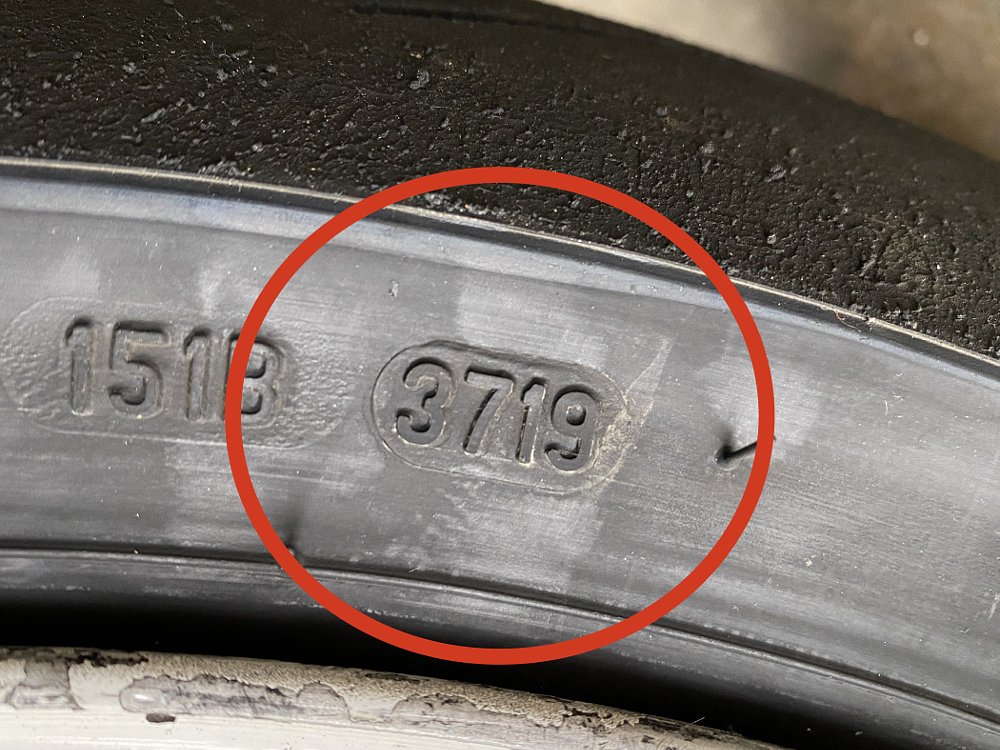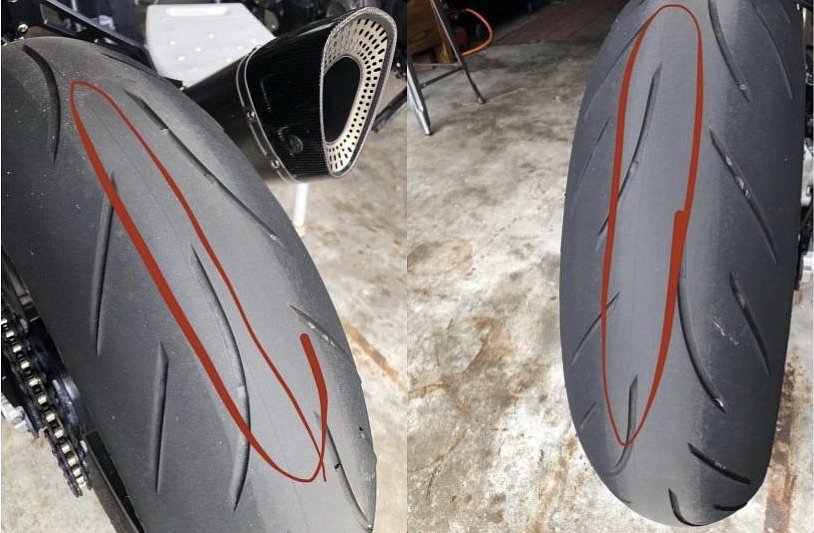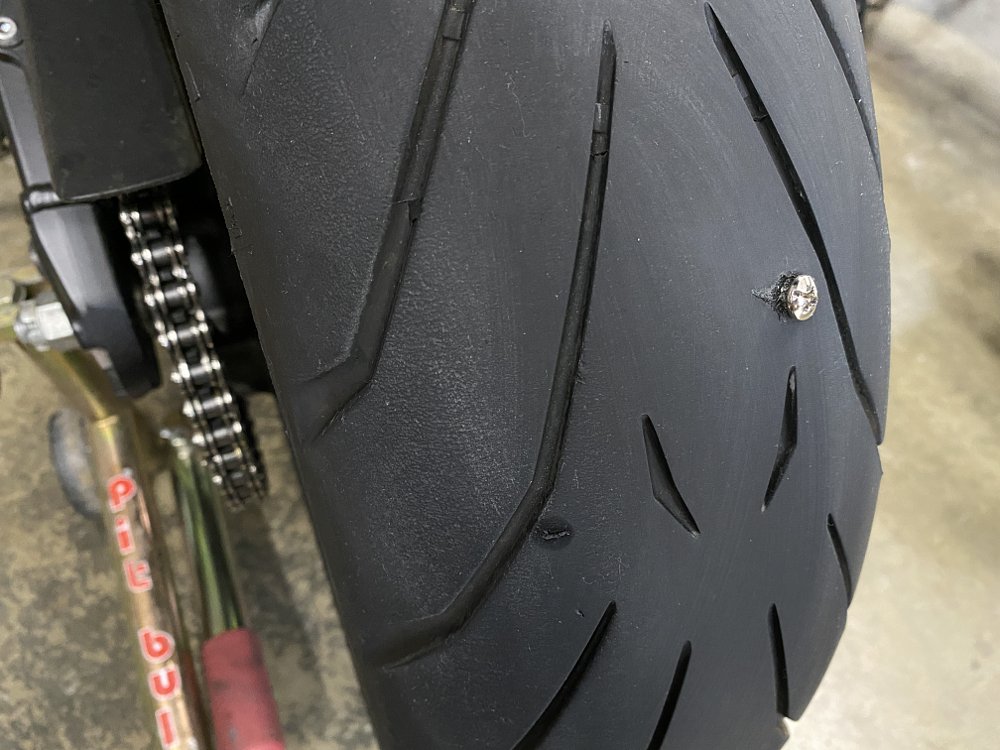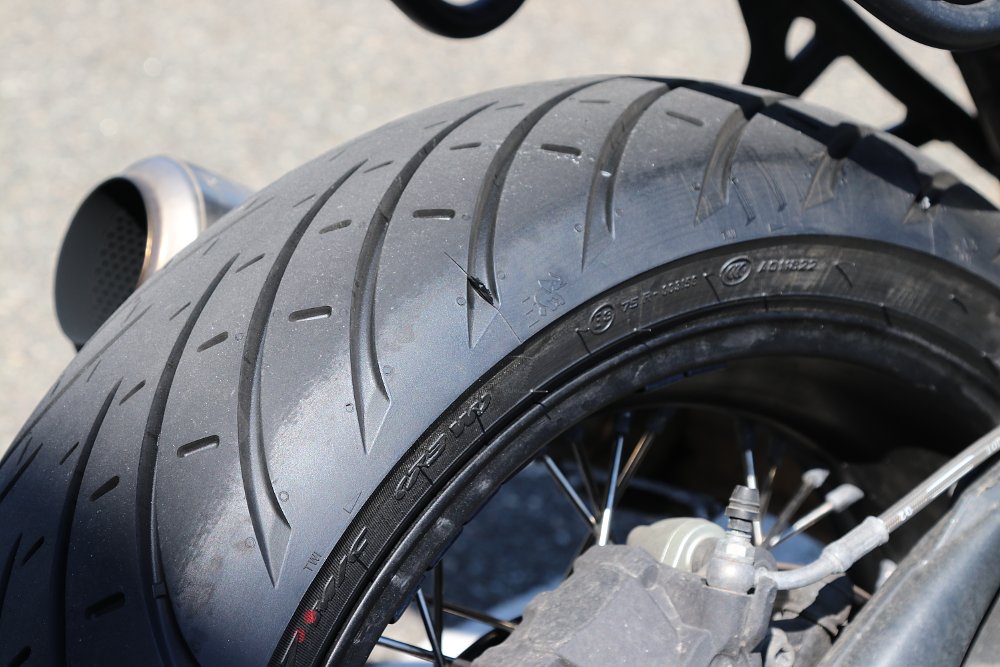As the title of this article implies, we’ve had a Q&A on tires before. Well, those round sections of rubber we all rely on are a hot enough topic that we’re visiting them again. And it makes sense, right? Tires have a huge impact on your bike’s safety and performance, so any questions about them warrant a response.
So, let’s roll into it…
This is the rear tire on my Vitpilen 701 after an hour on a concrete freeway. I’ve never seen this before in 30 years of riding. Is this what rain grooves do to tires? — @max_breemer
That line has nothing to do with the surface you were riding on. Furthermore, it’s totally normal and nothing to be concerned with. It’s called “antenna tread” and it’s a conductive band of rubber that helps disperse static electricity as you ride so you don’t get a shock when you step off the bike.
Antenna tread is common on automotive and motorcycle tires, though usually it's too faint see. However, some brands and models have more apparent lines than others. In my experience, Bridgestone tires have the most visible antenna tread, and by the looks of it you’re rolling on S21s, so it makes sense that the line would be especially prominent.
I got a small screw in my tire. Should I change the whole tire or can I plug it? — @slperkaracha
The safest option is to replace the tire, since the puncture may have damaged the tire’s carcass or belting in a way that could compromise its integrity. With that said, I’ve got a plug in the back tire of my Versys right now and wouldn’t hesitate to ride the bike cross-country tomorrow.
There are plenty of flat-repair kits on the market and plugs can be reliable if they’re installed properly, but not all punctures are eligible for repair. Of those tire manufacturers that condone roadside fixes (several brands don’t), it’s agreed that the puncture has to meet certain criteria.
For starters, it has to be within the center 75 percent of the tread. The shoulders and sidewalls flex too much to retain a plug and shouldn’t be repaired. The tire should also have sufficient tread to retain the plug (legal limit is 1/16 inch), and the puncture can be no larger than three to seven millimeters, depending on who you ask. Also, tears, slashes, and oblong punctures aren’t repairable.

How old can a tire on a bike be before I need to replace it? My 2015 FZ-09’s tires are from 2012. — @laz.moto
Most manufacturers say a tire expires after five years, even if all it’s done is sit on a warehouse shelf somewhere. That’s because the rubber oxidizes over time, and after long enough it can dry out and harden, which isn’t great for traction or carcass strength. There are a lot of factors here, including temperature swings and exposure to sunlight, but at eight years old, there’s no doubt your FZ’s rubber is due for replacement.
If you’re buying your rubber at a brick-and-mortar store (or examining a used bike that you’re considering for purchase), check the date codes on the sidewall of the tire. Anything younger than two years is considered fresh. Just like looking at the expiration date on milk at the supermarket, you want to make sure you get the freshest product you can.
I had a little accident and got oil all over the side of my tire. Is the tire ruined? — @steve_1ogan
“Oil” and “tire” are two words I never like to hear in one sentence, so I hope you’re okay. Luckily, as long as you didn’t go down on that slippery mess there’s no damage done. Mix up some Dawn dish soap and hot water and scrub the tire down with a sponge or bristle brush and it ought to be fine. I’d still ride on it carefully at first to ensure it gets scrubbed in properly, but the oil won’t have caused any damage to the rubber itself.

 Membership
Membership










